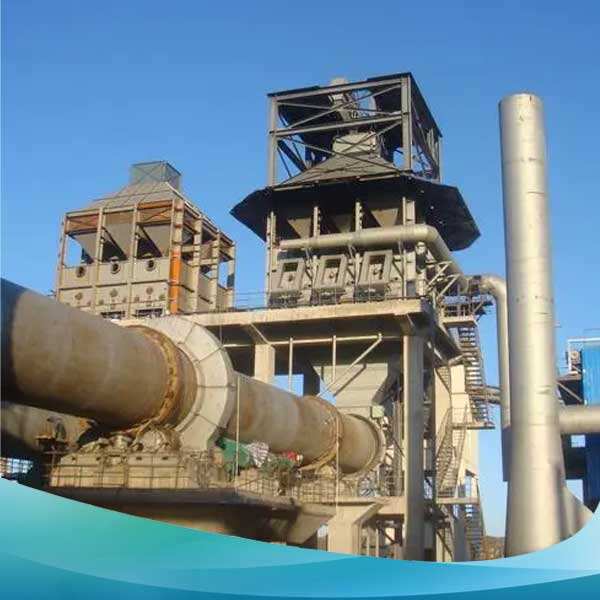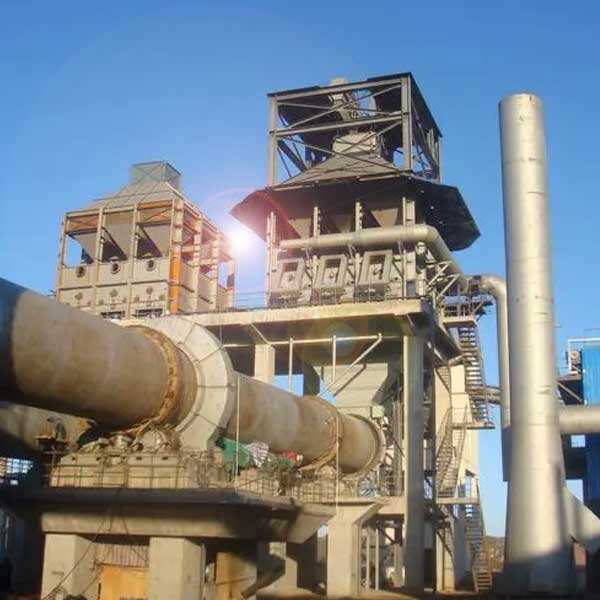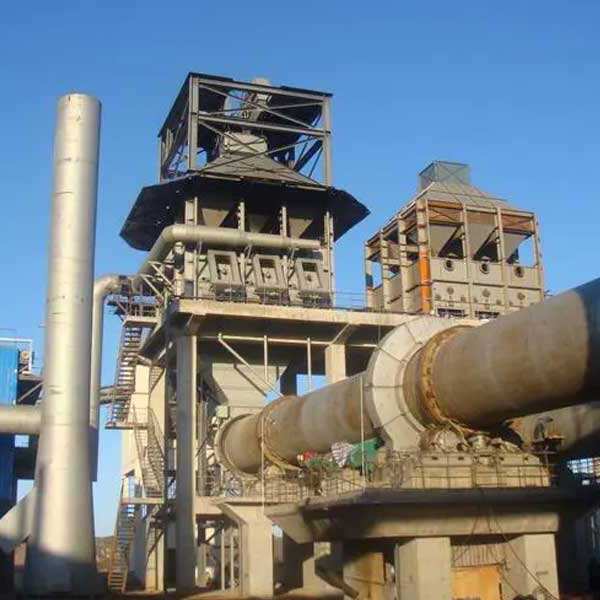Tātad, cimenta rotējošais kilns ir kāds liels tansiderma līdzīgs cilindrs, kas lēni rotē. Tam arī jāuzsildās, lai pamatīgie sastāvdaļas apvienotos pareizi un pārvērtu cimenu. Cimenta ražošana prasa daudz enerģijas, procesā iesaistot daudz karstuma, un, rezultātā, kilns strādā ļoti silts. Tas ir vēl mazliet vairāk no procesa, ko var apskatīt tik tuvu, lai pārliecinātos, vai viskas darbojas.
Dabas resursi tiek ievietoti kilnā, lai kļūtu par spēcīgi karšiem - faktiski 2700 Farenheita grādu karsti! Karstums ir tik stiprs, ka materiāli pārgāja kimiskajā transformācijā, kas saucama par klankera. Klankers~Karstuma atbalsta pelēkais cietās akmens struktūra, kas ir svarīgs cimenta ražošanas procesā. Pēc tam, kad klankers ir izgatavots, dabas resursi tiek uzliesmojuši līdz smalkam pulverim. Pamata sastāvdaļa Portlandas cimentā ir tiešām smalks pulveris, kas, sadarbojoties ar citiem sastāvdaļas, kļūst par Cimenta Starptautisko Inženieru limas ražošanas process to, ko mēs saucam par cimentu.
Tas ir enerģijas patēriņa intensīvs process, un tas nozīmē, ka cements ir ar diezgan zemu izmaksu-enerģijas attiecību: tas ir kļuvis par efektivāko materiālu būvniecībai, jo tā galvenie sastāvdaļas ( ļoti lēti!) karbonāts un ķermenis. Literāli katrs šī procesa solis jāplāno un jāizpilda uzmanīgi, lai iegūtu labu cementu ar minimālu atkritumu daudzumu. Cementa rotācijas kilns tiek izmantots, lai katalizētu šo izveides procesu, veicinot Cementa starptautiskās inženierzinātnes darbību. kalces apstrādes uzņēmums efektīvāku. Tas nozīmē, ka ideālās apstākļos var ražot vairāk cementa, izmantojot mazāk materiālu.
Lai šūpulis strādātu efektīvi un pareizi, ir nepieciešama konstanta temperatūra un ātruma līmenis. Ja temperatūra un ātrums pārāk daudz mainās, tiek ražots ļoti zema kvalitātes cements, kas kļūst par atkritumu materiālu. Lai kontrolētu šūpļa temperatūru, tiek izmantotas siltumāteres sistēmas un datoru pārvaldīti senzori, kas nodrošina efektīvu un pareizu darbību, neļaujot ražošanai saskart ar grūtībām.

Izmantojot fosila kurināmā aizstājēju, piemēram, augu materiālu vai atkritumus, tiek veikta viena no inovatīvajām darbībām. Tādējādi Cement International Engineering lietu apstrādes uzņēmums ne tikai samazina piesārņojumu un siltumnīcefekta gāzu emisijas, bet arī saglabā enerģijas izmaksas, uzturējot procesu ilgtspējīgu. Vēl interesantāk, Ignis ir aprīkots ar priekšsiltinātājiem. Priekšsiltinātāji var atgūt līdz 60% no šūpļa zaudēto siltuma, to atjaunojot procesā, kas rezultē nopietnās enerģijas ietaupījumos un degvielas izmaksu samazinājumā.

Pirmā no tām ir pretējšanas zona, kur smagu materiālu uztur līdz aptuveni 1800 grādiem pa Fahrenheitu [982 C]; Pirmie °F Uz Augšu Bāze. Vispirms jums jāsildina sākotnējais materiāls nākamajai solim. Pēc tam lieta ražošana no kalka tie tiek ievietoti degšanas zonā, kur temperatūra paaugstas līdz 2700 grādiem pa Fahrenheita. Tas ir tas vieta, kur notiek brīnumi!! No smagu materiāliem, izmantojot karstuma apstrādes procesu virs 2500 grādiem, tiek ražots klincers.

Beidzot tas nonāk uz dzesēšanas zonu. Tagad klincera temperatūra ir zema un to var viegli maldināt pulverī. Šis kalka kalcinēšanas procesa ir process, kā tiek izgatavots cements. Dzesēšanas procesa inicializēšana aizņem aptuveni 2–3 stundas. Darot to, galvenokārt strādājam ar temperatūras kontroli katrā procesa posmā un ātruma modulāciju, kā arī citiem svarīgiem apstākļiem, lai nodrošinātu ražoto cementa kvalitāti.
AGICO ļoti prasmīga tehniskā komanda specializējas cimenta rotējošais kilns EPC projektos, ieskaitot dizainu, ražošanu un instalāciju. piedāvā pilnu pirms-pārdošanas, pārdošanas laikā un pēc-pārdošanas servisu, kas nodrošina nepieciešamo tehnisko atbalstu, lai apmierinātu vajadzības.
Ilgu laiku AGICO ir turējusi profesionālu tehnisku komandu, pilnveidotu ražošanas tehnoloģiju un bagātu ražošanas pieredzi, izveidojot pilnu šafta kūrnes ražošanas tehnoloģiju pārvaldības sistēmu, kas padara enerģijas taupīgo un vides aizsardzības šafta kūrnes tehnoloģiju pilnīgu. Tehnoloģija attiecas uz cemanta rotācijas kūrni ar minimālu ieguldījumu, augstu automatizācijas pakāpi un augstu produktu kvalitāti. Turklāt tā ir ar zemu enerģijas patēriņu un gariem kūrnes darba dzīveslaikiem. Tas ir plaši izmantots metalurgijā, krājvielu metālos, ķīmijā, būvmaterialos, citos nozarēs, piemēram, dziļā apstrādē un citās nozarēs.
uzņēmums koncentrējies uz programmu dizainu, inženieru dizainu, speciālo iekārtu piegādi, kā arī darbinieku apmācību, šūnu pakalpojumiem, ceļu startiem, ražošanas sasniegšanu enerģijas taupīgiem un zaļajiem kalcijs šaftkilniem. Uzņēmums ir uzbūvējis aktivizētu Cementu rotācijas kilni dažādās izmēru, piemēram, 150m3, 170m3, 250m3, 350m3 utt. Kilni tika veiksmīgi atvērti un radīja nozīmīgu efektu! Izmantojot jaunāko tehnoloģiju cūkola šaftkilna, tika izstrādāts gāzes degšanas šaftkilns, un ar vairākiem uzņēmumiem tika noslēgti nolīgumi par dizainu.
vairāk nekā 20 gadus ir veltīti attīstībai, pētījumiem, ražošanai un instalēšanai šūnu kilnā. Tas ir pilns Cementa rotācijas kilns ar zemāko investīciju līmeni. Šūnu kilns piedāvā ilgtspējīgu dienesta ilgumu, uz kuru varat mums uzticēties perfekta servisa un augstas kvalitātes šūnu kilna dēļ.